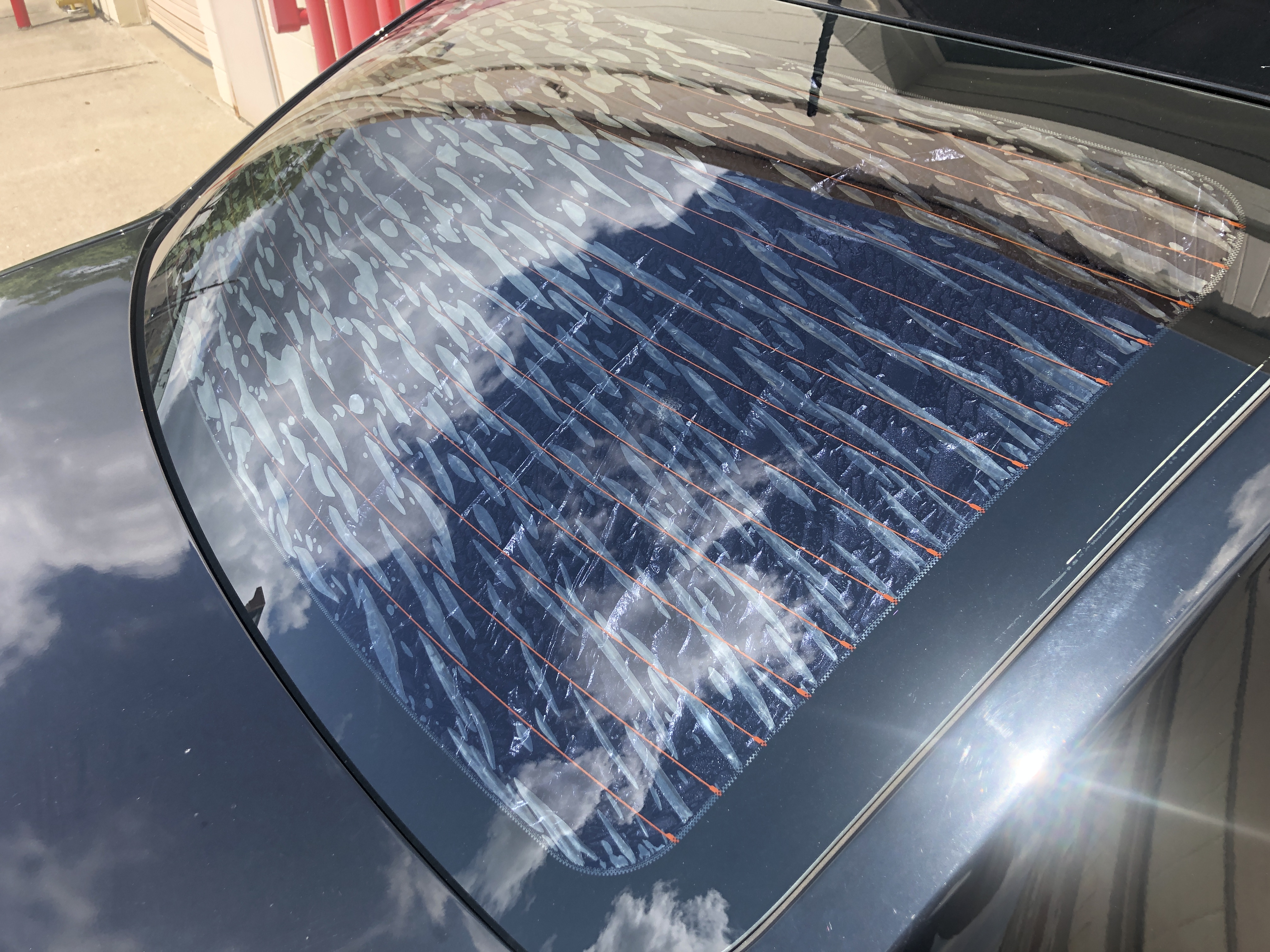How automotive window tinting clinton township Helps Prevent Sun Damage and Fading
Wiki Article
Every little thing You Required to Know Concerning Automobile Home Window Tinting for Your Lorry
Vehicle window tinting is a functional enhancement for lots of car owners. It provides advantages such as raised convenience and energy performance. Various tint films deal with various requirements and preferences. However, understanding lawful guidelines and choosing the ideal color portion is important. The setup process and appropriate maintenance also play substantial functions in making sure the longevity of the color. What other aspects should one think about prior to making a decision on home window tinting?Benefits of Automobile Window Tinting
Some car proprietors may overlook it, car window tinting deals many advantages that enhance both the driving experience and the vehicle's long life. One of the main benefits is the decrease of heat buildup inside the automobile, enabling for a much more comfy trip, especially during heat. This can bring about decreased reliance on a/c, enhancing gas efficiency.Additionally, home window tinting supplies defense versus harmful UV rays, which can cause skin damage and fade interior materials in time. By obstructing these rays, the tint helps preserve the car's interior and keep its resale value.Moreover, colored home windows can boost personal privacy and safety and security, as they make it a lot more tough for outsiders to see inside the car. This included layer of security can prevent potential theft. Generally, vehicle home window tinting functions as a functional financial investment that adds to both comfort and the vehicle's total well-being.
Kinds Of Home Window Tint Films
When considering automobile window tinting, car proprietors experience a variety of home window color films, each developed to meet details demands and choices. The first group is colored home window film, which offers a basic degree of privacy and UV defense while being cost-efficient. Next, metalized movies integrate tiny metal particles, mirroring warmth and enhancing durability, although they might hinder electronic signals.Ceramic movies are one more alternative, understood for their premium warm rejection and quality, providing high efficiency without signal interference. Crossbreed films incorporate qualities of dyed and metalized movies, striking a balance in between expense and functionality. Each type of home window color film provides unique benefits, permitting vehicle owners to pick based upon their particular needs, such as warmth budget plan, control, and appearance considerations. Recognizing these options is important for making an educated choice pertaining to automobile home window tinting.Comprehending Lawful Regulations
When thinking about automobile home window tinting, it is essential to comprehend the lawful laws that govern tint darkness limits and windshield color needs. These policies can vary significantly from state to state, affecting what is allowable for vehicle owners. Familiarizing oneself with these laws guarantees conformity and aids stay clear of possible fines or fines.Color Darkness Limitations
Exactly how can car owners ensure they remain compliant with local laws concerning window tinting? Understanding tint darkness limitations is vital. Each state has specific regulations that dictate the permissible degrees of darkness for home window tints, which are gauged by Visible Light Transmission (VLT) percents. Normally, front-side windows must permit a greater portion of light compared to back windows. Some states might enable only 30% VLT for front home windows, while the rear home windows might be allowed to have significantly darker tints. To assure compliance, vehicle proprietors should speak with state standards or regional police for accurate info. Additionally, licensed tinting professionals can give understandings regarding lawful limits, making certain that car proprietors make informed choices.Windshield Tint Laws

State-Specific Laws
Guiding with the landscape of state-specific laws pertaining to automobile window tinting requires mindful focus to information, as laws can differ significantly from one state to another. Each state has its own collection of guidelines controling allowed tint percentages, kinds of materials, and placement on automobile windows. Some states permit darker colors on rear home windows while restricting them on front home windows, while others have stricter total limitations (automotive window tinting clinton township). Additionally, particular states mandate making use of specific products or call for accreditation from installers. Failing to follow these laws can cause fines or the need to eliminate non-compliant tint. Subsequently, vehicle owners need to consult their state's Division of Electric motor Automobiles or relevant authority to guarantee adherence to regional regulationsPicking the Right Tint Portion
When picking the right tint portion for an automobile's windows, one should take into consideration various aspects that impact both looks and capability. Tint portions typically range from 5% to 70%, with lower percentages offering darker shades and higher portions permitting extra light in. A darker tint can boost personal privacy and lower glare, while a lighter color can maintain exposure and follow lawful restrictions.Furthermore, personal preference plays a considerable function in this choice. Some people might like the smooth appearance of darker tints, while others might prefer an extra open, ventilated feel. In addition, the lorry's objective need to be taken into consideration; as an example, those using their automobiles for business functions might choose lighter tints to keep an expert look.Ultimately, the best tint percent equilibriums personal style, convenience, and adherence to regional policies, making sure an enjoyable tinting experience.The Installment Refine
An effective installation of home window tint needs mindful attention to detail and the right devices. The process typically begins with detailed cleaning of the home windows to remove dust, particles, and dust, guaranteeing proper adhesion of the movie. When the surface areas are prepared, the installer measures and reduces the color film to fit each home window accurately.Next, the movie is positioned on the glass, usually making use Read More Here of a solution to help with simple change and protect against air bubbles. Heat is in some cases used to the movie to adapt it to the home window's curves, enhancing its appearance and longevity. After confirming a seamless fit, the installer meticulously trims any excess movie along the edges.Finally, the installer look for blemishes and validates all sides are safe and secure. This thorough strategy is essential not only for looks but also for achieving the preferred performance advantages of window tinting, such as UV security and warm reduction.
Maintenance and Look After Tinted Windows
Correct upkeep and care are crucial for maintaining the stability of tinted windows. Reliable cleansing methods, the evasion of hazardous chemicals, and regular inspections for damage play important roles in making certain durability. By following these standards, automobile owners can keep the functional and visual benefits of their home window tint.Cleaning Methods for Tint
Keeping the clearness and longevity of colored windows calls for particular cleansing strategies customized to the film's fragile surface. It is important to make use of a soft microfiber fabric to stay clear of scraping the color while cleaning. A mild remedy of water and a few decreases of mild meal soap can properly eliminate dust and grime. It is a good idea to apply the cleansing solution to the fabric, instead of directly onto the tinted surface area, to avoid wetness from leaking into the edges of the film. Mild, circular motions need to be used to clean the windows thoroughly. Routine cleaning assists maintain visibility and prevents build-up, guaranteeing that the color stays in prime problem gradually. Adhering to these techniques will expand the life of tinted windows.Staying Clear Of Dangerous Chemicals
Lots of family cleansing items are efficient on different surface areas, they can present considerable risks to tinted windows. Chemicals such as ammonia, bleach, and certain solvents can deteriorate the tint film, leading to discoloration and peeling. People need to go with pH-balanced cleansers especially made for colored home windows. In addition, making use of soft microfiber towels will certainly aid avoid scratches and keep the color's stability. Regular maintenance is important; consequently, staying clear of harsh scrubbing up or unpleasant materials is necessary. It is a good idea to check out product tags carefully to verify compatibility with window tints. By picking the ideal cleansing options and tools, lorry owners can preserve the look and performance of their colored windows, guaranteeing a much longer life expectancy and peak efficiency.Checking for Damage
Normal assessments of tinted home check these guys out windows are essential for identifying any kind of signs of damages that may endanger their efficiency and appearance. Proprietors ought to look for bubbling, peeling off, or discoloration, as these concerns can indicate poor installation or direct exposure to unsafe aspects. It is suggested to check the edges of the film where peeling off might evaluate and start for any scratches that could impact visibility. Additionally, ultraviolet (UV) rays can trigger the tint to degrade gradually, so monitoring its performance in blocking UV light is crucial. If any type of damages is detected, timely activity needs to be taken, which may consist of expert repair or replacement. Preserving tinted home windows not just boosts visual appeals however also assurances proceeded defense for both passengers and the vehicle interior.Common Myths Regarding Window Tinting
What false impressions border home window tinting for vehicles? Numerous individuals believe that all window colors are prohibited, but laws vary by state, enabling specific levels of tinting. Another usual misconception is that darker colors obstruct even more warmth; however, the effectiveness of home window movies relies on their innovation instead of darkness. Some people likewise think that home window tinting is only for aesthetic appeals, ignoring its benefits, such as UV protection and glow decrease. In addition, several assume that home window tinting will certainly damage their vehicle's glass, yet properly used colors can actually boost glass durability. There is an idea that window colors obstruct presence, yet high-grade movies are developed to keep clear sightlines while supplying privacy. Recognizing these myths aids consumers make educated choices pertaining to window tinting, guaranteeing they take pleasure in the full variety of benefits it uses.Frequently Asked Inquiries
How Much Time Does Home Window Tinting Generally Last?
The long life of home window tinting differs based on elements such as installation high quality, film type, and environmental conditions. Typically, high-quality color can last anywhere from five to 10 years prior to requiring replacement or reapplication.Can I Eliminate Window Color Myself?
Eliminating home window color oneself is possible, though it might be challenging. Individuals must make use of a heat source and sticky eliminator to ease the procedure, but caution is suggested to stay clear of damaging the vehicle's glass or interior.What Equipment Are Required for Do It Yourself Home Window Tinting?

Will Home Window Tinting Damage My Car's Glass?
Window tinting, when used properly, normally does not damage a vehicle's glass. Inappropriate setup or low-quality movies might lead to peeling, bubbling, or scraping, possibly jeopardizing the integrity of the glass over time.Can Tinted Windows Influence My Car's Resale Worth?
The effect of tinted windows on a vehicle's resale worth can vary. While some customers appreciate the included privacy and UV defense, others may watch it as a possible issue, possibly influencing resale positively or adversely. When thinking about auto home window tinting, vehicle proprietors encounter a range of window color movies, each developed to meet certain needs and choices. When thinking about auto home window tinting, it is crucial to recognize the legal laws that control tint darkness restrictions and windshield color requirements. Commonly, front-side windows have to allow a greater percentage of light compared to back home windows. Some states might allow only 30% VLT for front home windows, while the back windows could be permitted to have significantly darker colors. Some states permit darker tints on rear windows while banning them on front home windows, while others have more stringent general look at this now limitations.Report this wiki page